-
 Bitcoin
Bitcoin $106,754.6083
1.33% -
 Ethereum
Ethereum $2,625.8249
3.80% -
 Tether USDt
Tether USDt $1.0001
-0.03% -
 XRP
XRP $2.1891
1.67% -
 BNB
BNB $654.5220
0.66% -
 Solana
Solana $156.9428
7.28% -
 USDC
USDC $0.9998
0.00% -
 Dogecoin
Dogecoin $0.1780
1.14% -
 TRON
TRON $0.2706
-0.16% -
 Cardano
Cardano $0.6470
2.77% -
 Hyperliquid
Hyperliquid $44.6467
10.24% -
 Sui
Sui $3.1128
3.86% -
 Bitcoin Cash
Bitcoin Cash $455.7646
3.00% -
 Chainlink
Chainlink $13.6858
4.08% -
 UNUS SED LEO
UNUS SED LEO $9.2682
0.21% -
 Avalanche
Avalanche $19.7433
3.79% -
 Stellar
Stellar $0.2616
1.64% -
 Toncoin
Toncoin $3.0222
2.19% -
 Shiba Inu
Shiba Inu $0.0...01220
1.49% -
 Hedera
Hedera $0.1580
2.75% -
 Litecoin
Litecoin $87.4964
2.29% -
 Polkadot
Polkadot $3.8958
3.05% -
 Ethena USDe
Ethena USDe $1.0000
-0.04% -
 Monero
Monero $317.2263
0.26% -
 Bitget Token
Bitget Token $4.5985
1.68% -
 Dai
Dai $0.9999
0.00% -
 Pepe
Pepe $0.0...01140
2.44% -
 Uniswap
Uniswap $7.6065
5.29% -
 Pi
Pi $0.6042
-2.00% -
 Aave
Aave $289.6343
6.02%
Is it a real drop when KDJ crosses but the trading volume shrinks?
A bearish KDJ crossover with shrinking volume may signal weak selling pressure, suggesting a possible false move rather than a real downtrend.
Jun 20, 2025 at 03:49 pm

Understanding KDJ and Its Role in Cryptocurrency Trading
In the realm of cryptocurrency trading, technical analysis plays a crucial role in identifying potential price movements. The KDJ indicator, also known as the stochastic oscillator with a J line added for momentum confirmation, is widely used by traders to gauge overbought or oversold conditions. It consists of three lines: K-line (fast stochastic), D-line (slow stochastic), and J-line (divergence). When the K-line crosses above the D-line, it's typically interpreted as a bullish signal, while a cross below suggests bearish sentiment.
However, interpreting these signals becomes more complex when volume does not align with the movement suggested by the KDJ crossover. In such cases, the question arises: Is this a real drop or just a false signal?
The Significance of Volume in Confirming Price Action
Volume is often referred to as the "fuel" behind price movements. A genuine downtrend or uptrend usually comes with an increase in volume, indicating strong market participation. Conversely, a shrinking trading volume during a KDJ crossover may suggest that the move lacks conviction from major players in the market.
For instance, if the KDJ shows a bearish crossover but the volume remains low, it could mean that sellers are not aggressively pushing the price down. This scenario might indicate a temporary pullback rather than a full reversal. Traders should pay close attention to whether volume confirms or contradicts the KDJ signal before making any decisions.
How to Analyze KDJ Crossovers with Shrinking Volume
Analyzing KDJ crossovers involves multiple layers of verification. Here’s how you can approach it step-by-step:
- Identify the KDJ crossover: Look for the moment when the K-line crosses above or below the D-line.
- Check the direction of the J-line: If the J-line is sharply rising or falling, it adds weight to the crossover.
- Observe the volume pattern: Compare current volume levels with the average volume over the past 10–20 periods.
- Look at candlestick formations: Are there long wicks, engulfing patterns, or dojis forming around the crossover?
- Cross-reference with other indicators: Use moving averages or RSI to confirm the strength of the trend.
When volume shrinks during a bearish KDJ crossover, it might be a sign of indecision or consolidation rather than a true breakdown. Traders who act solely on the crossover without checking volume risk entering a trade based on weak momentum.
Case Studies: Real Drops vs False Signals in Crypto Markets
Let’s take two hypothetical examples using Bitcoin (BTC) charts:
Scenario A – Real Drop: BTC experiences a bearish KDJ crossover accompanied by a spike in volume. The price breaks key support levels, and the J-line dives sharply below the D-line. Over the next few days, the price continues to fall, confirming the signal.
Scenario B – False Signal: BTC sees a bearish KDJ crossover, but volume drops significantly. The price dips slightly but quickly rebounds, forming a hammer candlestick. The J-line doesn’t extend far below the D-line, suggesting lack of momentum. This indicates that the initial drop was not supported by strong selling pressure.
These scenarios highlight why relying solely on KDJ can be misleading. Shrinking volume must raise caution and prompt further investigation into other confirming signals.
Practical Steps for Validating KDJ Crossovers in Crypto Trading
To avoid being misled by false signals, follow these practical steps when observing a KDJ crossover with declining volume:
- Use time frame analysis: Check higher time frames like 4-hour or daily charts to see if the crossover aligns with broader trends.
- Measure volatility: High volatility without significant volume may suggest fakeouts or wash trading.
- Set stop-losses: Even if a signal seems valid, always manage risk with proper stop placement.
- Wait for retest or breakout confirmation: Instead of acting immediately on the crossover, wait for a retest of key levels or a clear breakout.
- Combine with support/resistance zones: A bearish KDJ crossover near a strong support level might not be reliable unless broken convincingly.
By integrating these practices, traders can better assess whether a KDJ crossover accompanied by shrinking volume is signaling a real drop or a deceptive move.
Frequently Asked Questions
Q: Can I rely solely on KDJ for making trading decisions in crypto markets?
A: No, KDJ should not be used in isolation. It works best when combined with volume analysis, candlestick patterns, and other technical indicators to validate signals.
Q: What does a shrinking volume during a bullish KDJ crossover imply?
A: Similar to bearish crossovers, a bullish KDJ crossover with shrinking volume may indicate weak buying pressure and potential failure of the upward move.
Q: How can I differentiate between a temporary pullback and a real trend reversal using KDJ?
A: Look for confluence with other tools—such as Fibonacci retracements, trendlines, and volume spikes—to determine if the crossover is part of a larger reversal or just a short-term correction.
Q: Should I ignore all KDJ signals when volume is low?
A: Not necessarily. Low volume may indicate consolidation. Monitor the price action closely after the crossover and wait for confirmation before taking a position.
Disclaimer:info@kdj.com
The information provided is not trading advice. kdj.com does not assume any responsibility for any investments made based on the information provided in this article. Cryptocurrencies are highly volatile and it is highly recommended that you invest with caution after thorough research!
If you believe that the content used on this website infringes your copyright, please contact us immediately (info@kdj.com) and we will delete it promptly.
- Pi Network, KYC Sync, and Pi2Day: A Deep Dive into the Latest Developments
- 2025-06-20 18:45:13
- Ethereum, Bitcoin, and the Price Prediction Game: What's Hot Now?
- 2025-06-20 18:25:13
- Bitcoin Price Breakout Imminent? Decoding the Crypto Market's Next Big Move
- 2025-06-20 18:45:13
- Cracking the Cross-Chain Code: Interoperability and Web3 UX
- 2025-06-20 18:25:13
- Blockchain, P2P Games, and Marketplaces: A New Era of On-Chain Economies
- 2025-06-20 18:57:14
- Arizona's Bitcoin Reserve Bill: Senate Vote Revives Crypto Debate
- 2025-06-20 18:57:14
Related knowledge
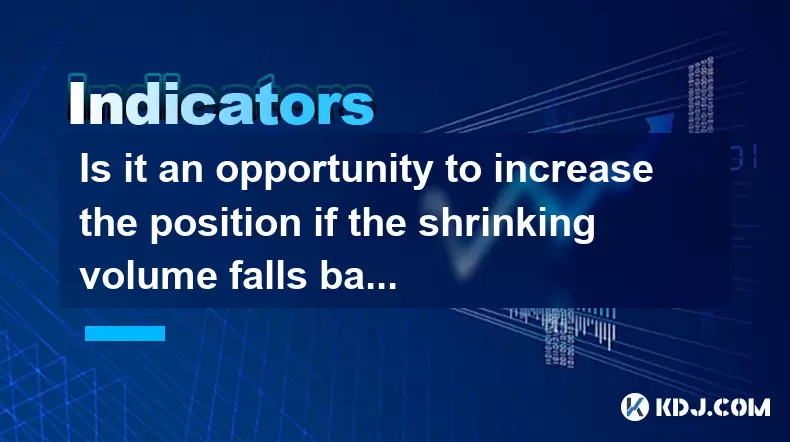
Is it an opportunity to increase the position if the shrinking volume falls back to the rising trend line?
Jun 20,2025 at 06:22pm
Understanding the Shrinking Volume in Cryptocurrency TradingIn cryptocurrency trading, volume is one of the most critical indicators used to confirm price movements and trends. When traders observe a scenario where volume shrinks during a pullback, it can signal either a lack of selling pressure or an imminent reversal. This phenomenon often occurs when...
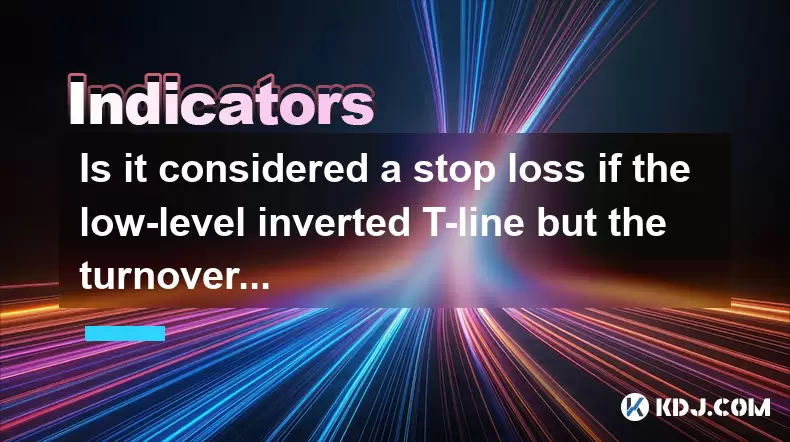
Is it considered a stop loss if the low-level inverted T-line but the turnover rate is extremely low?
Jun 20,2025 at 04:49pm
Understanding the Low-Level Inverted T-Line in Cryptocurrency ChartsIn technical analysis within the cryptocurrency market, candlestick patterns are crucial indicators for traders to predict potential price movements. The low-level inverted T-line is a specific type of candlestick pattern that often raises questions among traders. This pattern typically...
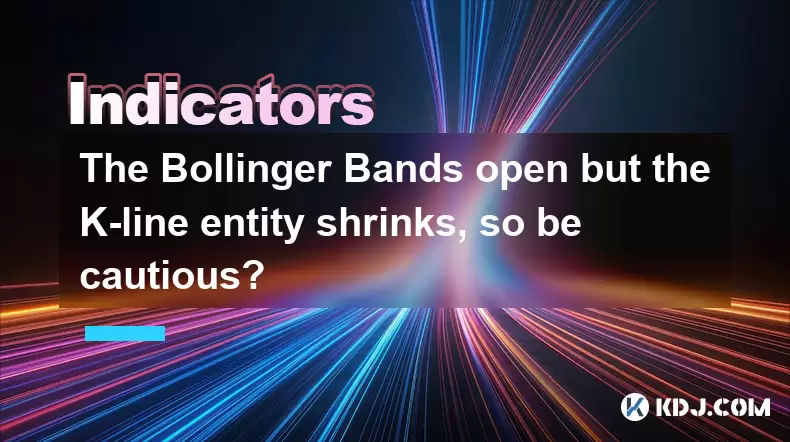
The Bollinger Bands open but the K-line entity shrinks, so be cautious?
Jun 20,2025 at 06:08pm
Understanding the Bollinger Bands and K-Line RelationshipBollinger Bands are a popular technical analysis tool used in cryptocurrency trading. They consist of a moving average (usually 20-period) with two standard deviation lines plotted above and below it. These bands dynamically adjust to price volatility, expanding when volatility increases and contr...
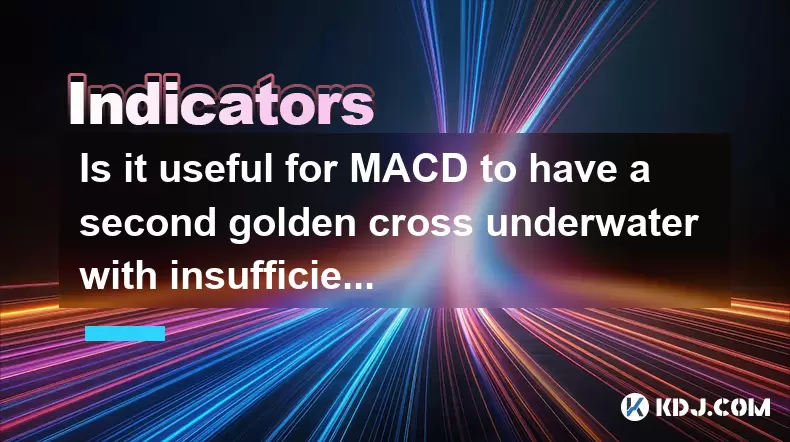
Is it useful for MACD to have a second golden cross underwater with insufficient volume?
Jun 20,2025 at 06:49pm
Understanding the MACD and Its Golden CrossThe Moving Average Convergence Divergence (MACD) is a popular technical analysis tool used by traders to identify potential buy or sell signals. It consists of three components: the MACD line, the signal line, and the histogram. The golden cross occurs when the MACD line crosses above the signal line, often see...
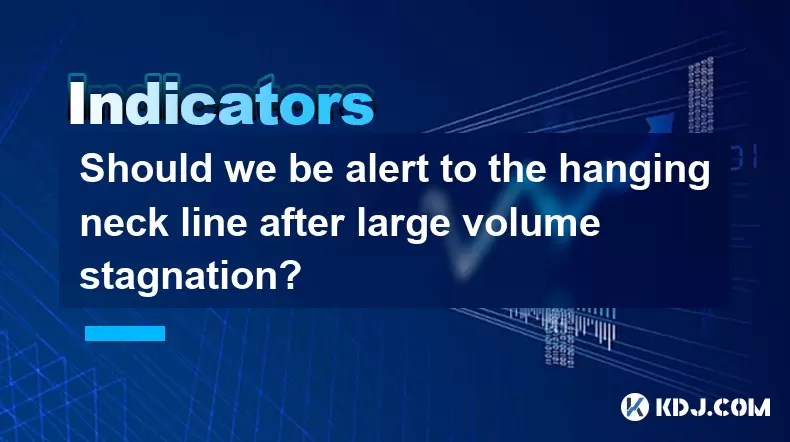
Should we be alert to the hanging neck line after large volume stagnation?
Jun 20,2025 at 07:01pm
Understanding the Hanging Neck Line in Cryptocurrency TradingThe hanging neck line is a technical analysis pattern that often appears on candlestick charts and is considered a bearish reversal signal. In the context of cryptocurrency trading, recognizing this formation can be crucial for traders looking to avoid potential price drops after a period of u...

Is it a real drop when KDJ crosses but the trading volume shrinks?
Jun 20,2025 at 03:49pm
Understanding KDJ and Its Role in Cryptocurrency TradingIn the realm of cryptocurrency trading, technical analysis plays a crucial role in identifying potential price movements. The KDJ indicator, also known as the stochastic oscillator with a J line added for momentum confirmation, is widely used by traders to gauge overbought or oversold conditions. I...

Is it an opportunity to increase the position if the shrinking volume falls back to the rising trend line?
Jun 20,2025 at 06:22pm
Understanding the Shrinking Volume in Cryptocurrency TradingIn cryptocurrency trading, volume is one of the most critical indicators used to confirm price movements and trends. When traders observe a scenario where volume shrinks during a pullback, it can signal either a lack of selling pressure or an imminent reversal. This phenomenon often occurs when...

Is it considered a stop loss if the low-level inverted T-line but the turnover rate is extremely low?
Jun 20,2025 at 04:49pm
Understanding the Low-Level Inverted T-Line in Cryptocurrency ChartsIn technical analysis within the cryptocurrency market, candlestick patterns are crucial indicators for traders to predict potential price movements. The low-level inverted T-line is a specific type of candlestick pattern that often raises questions among traders. This pattern typically...

The Bollinger Bands open but the K-line entity shrinks, so be cautious?
Jun 20,2025 at 06:08pm
Understanding the Bollinger Bands and K-Line RelationshipBollinger Bands are a popular technical analysis tool used in cryptocurrency trading. They consist of a moving average (usually 20-period) with two standard deviation lines plotted above and below it. These bands dynamically adjust to price volatility, expanding when volatility increases and contr...

Is it useful for MACD to have a second golden cross underwater with insufficient volume?
Jun 20,2025 at 06:49pm
Understanding the MACD and Its Golden CrossThe Moving Average Convergence Divergence (MACD) is a popular technical analysis tool used by traders to identify potential buy or sell signals. It consists of three components: the MACD line, the signal line, and the histogram. The golden cross occurs when the MACD line crosses above the signal line, often see...

Should we be alert to the hanging neck line after large volume stagnation?
Jun 20,2025 at 07:01pm
Understanding the Hanging Neck Line in Cryptocurrency TradingThe hanging neck line is a technical analysis pattern that often appears on candlestick charts and is considered a bearish reversal signal. In the context of cryptocurrency trading, recognizing this formation can be crucial for traders looking to avoid potential price drops after a period of u...

Is it a real drop when KDJ crosses but the trading volume shrinks?
Jun 20,2025 at 03:49pm
Understanding KDJ and Its Role in Cryptocurrency TradingIn the realm of cryptocurrency trading, technical analysis plays a crucial role in identifying potential price movements. The KDJ indicator, also known as the stochastic oscillator with a J line added for momentum confirmation, is widely used by traders to gauge overbought or oversold conditions. I...
See all articles

























































































